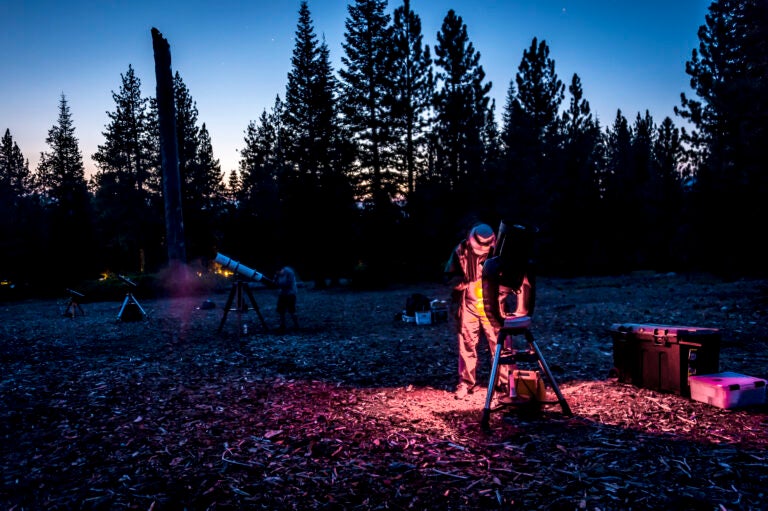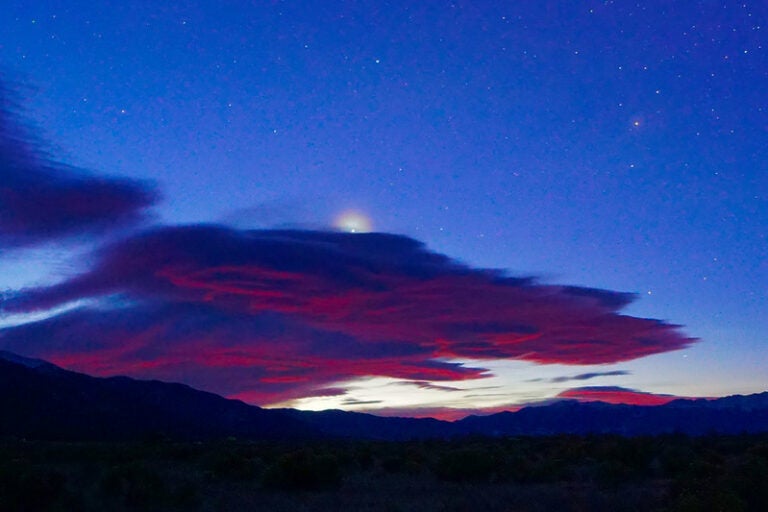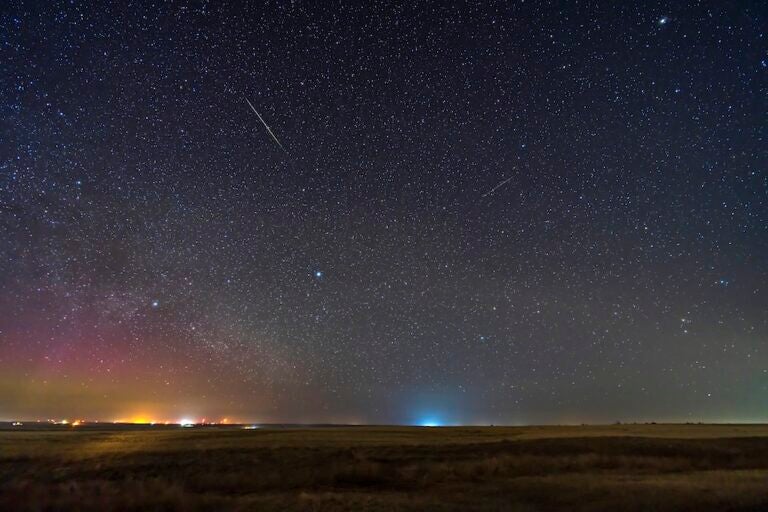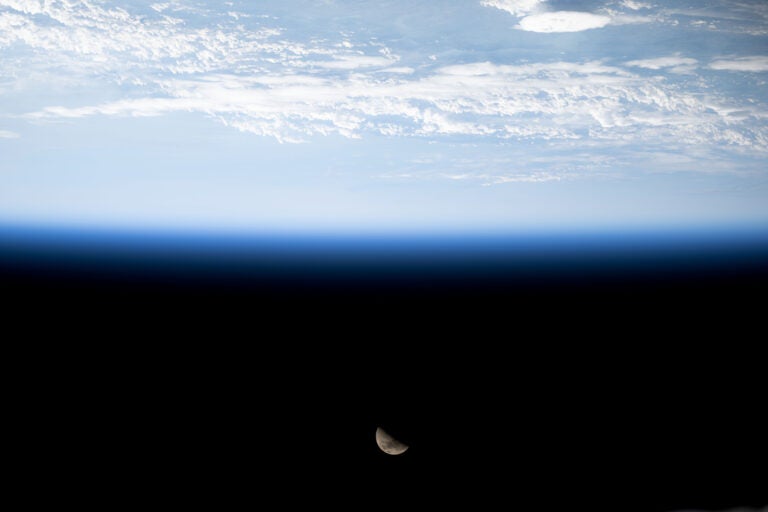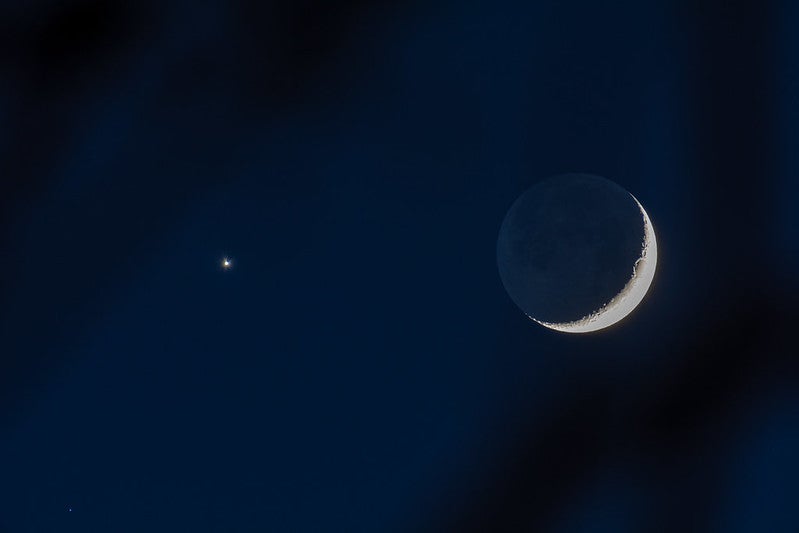
Friday, August 2
The constellation Hercules stands high in the eastern sky after dark tonight. Although it’s well known for the famous globular cluster M13, the Strongman is home to many other deep-sky treasures, including NGC 6210, the Turtle Nebula.
This 9th-magnitude planetary nebula is achievable in even small scopes because it is compact and has a high surface brightness. It’s located 4° northeast of Hercules’ beta star, 3rd-magnitude Kornephoros. Roughly ellipsoidal in shape (its resemblance to a turtle may be somewhat subjective), the brighter inner region of the nebula is just 14″ across, while the fainter outer portion spans nearly an arcminute. Try dropping in an Oxygen-III filter to help increase the contrast of the nebula against the background sky.
Like all planetaries, the Turtle Nebula is generated as a dying Sun-like star blows off its outer layers. The core of that star lies at the center of the nebula, glowing white-hot as a 13th-magnitude white dwarf.
Sunrise: 6:00 A.M.
Sunset: 8:12 P.M.
Moonrise: 3:44 A.M.
Moonset: 7:37 P.M.
Moon Phase: Waning crescent (3%)
*Times for sunrise, sunset, moonrise, and moonset are given in local time from 40° N 90° W. The Moon’s illumination is given at 12 P.M. local time from the same location.
Saturday, August 3
Tonight, we’re looking south after dark, toward the large, circular constellation Ophiuchus. To the left of Ophiuchus is Aquila, home to the bright star Altair, one of the three stars anchoring the famous Summer Triangle. Between these two constellations lies Serpens Cauda, home to tonight’s target: Graff’s Cluster (IC 4756)
This open cluster is visible to the naked eye, with a magnitude of 4.6. Its young suns sprawl across nearly a degree of sky some 4.5° west of 5th-magnitude Alya (Theta [θ] Serpentis). A small telescope offers an excellent view, showing off some 50 of the cluster’s stars.
IC 4756 lies along the plane of the Milky Way, which runs right up through Aquila (and the center of the Summer Triangle). Our galaxy’s plane is where most open clusters are found, as this is where most of the star-forming gas and dust in our spiral galaxy is located.
Sunrise: 6:01 A.M.
Sunset: 8:11 P.M.
Moonrise: 4:49 A.M.
Moonset: 8:13 P.M.
Moon Phase: Waning crescent (1%)
Sunday, August 4
Mercury is stationary at 4 A.M. EDT. Together with Venus, the tiny planet is visible in the constellation Leo, which is sinking in the west after sunset in the evening sky.
Also located in Leo is the Moon, which reaches its New phase at 7:13 A.M. EDT. During this phase, our satellite is essentially invisible from Earth, as its nearside is completely in shadow.
Additionally, Venus passes 1.1° north of Regulus, Leo’s alpha star, at 6 P.M. EDT. To catch the pairing, you’ll need to be quick and have an observing site with a clear western horizon. A bit of elevation above the surrounding area will also be helpful.
Thirty minutes after sunset, Venus and Regulus are a mere 3° high. Venus is blazingly bright at magnitude –3.9, far outshining the star, which is magnitude 1.4. The planet sits just to the upper right of the star; if you can’t easily spot Regulus, try using a pair of binoculars or a small telescope to bring out its light against the slowly falling dusk.
Far to Venus’ lower left, barely 1° high at this time, is Mercury, glowing at magnitude 1.2. Again, you may need a telescope or binoculars to spot it. If you can find it, though, you’ll easily notice the planet is in a crescent phase, with just 20 percent of its surface lit. However, its apparent size is quite respectable: 10″, the same as Venus. By contrast, Venus shows off a nearly full face that is 96 percent lit.
Sunrise: 6:02 A.M.
Sunset: 8:10 P.M.
Moonrise: 5:56 A.M.
Moonset: 8:42 P.M.
Moon Phase: New
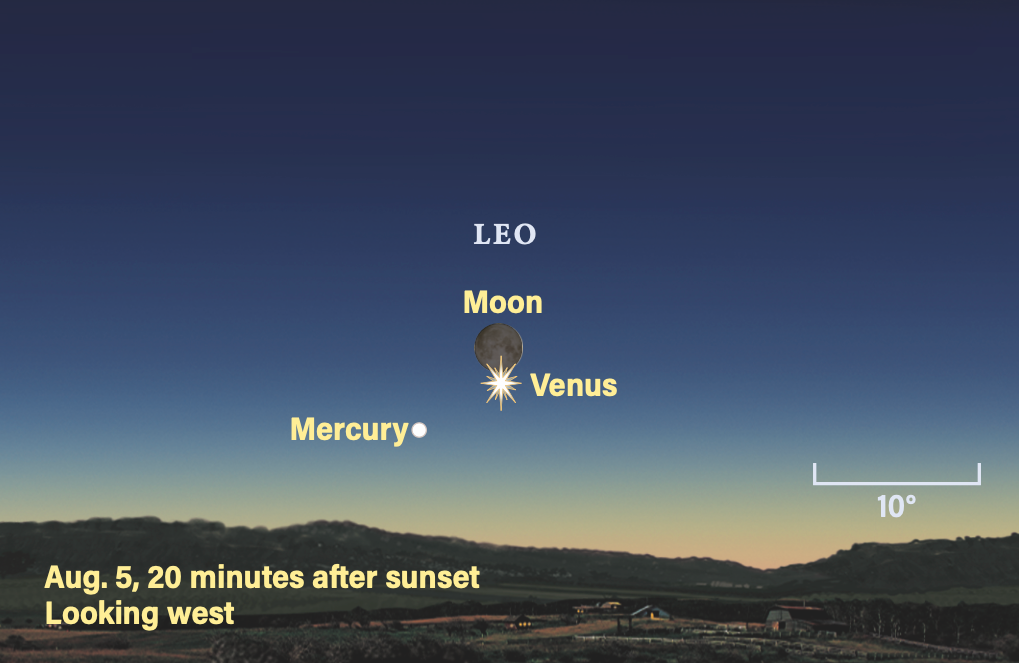
Monday, August 5
Today holds something for everyone, whether you’re an early riser or prefer post-sunset observing.
Mars passes 5° north of the bright star Aldebaran at 3 P.M. EDT. You can catch the magnitude 0.9 Red Planet in the east, standing to the star’s upper left in the few hours before dawn and forming a second, similarly ruddy “eye” for Taurus the Bull. Aldebaran (magnitude 0.9) is a red giant, appearing to the eye as an orangey-red point of light in the sky because it is relatively cool. Mars, meanwhile, has a heavily oxidized (rusty) surface, which reflects sunlight and shows off its red color when we view it from Earth.
Mars isn’t the only bright planet in Taurus, either. Magnitude –2.1 Jupiter far outshines either Mars or Aldebaran; the gas giant is located to Mars’ lower left, perhaps right where Taurus’ forehead would be and forming a mystical third eye for the Bull.
In the evening sky, the delicate crescent Moon passes 1.7° north of Venus at 6 P.M. EDT and then, two hours later, the Moon passes 7° north of Mercury at 8 P.M. EDT. Twenty minutes after sunset in the Midwest, the Moon appears to stand directly above Venus, allowing you to use the bright planet to tease out the slim, barely 3-percent-lit crescent above it. The pair is roughly 6° high. To their lower left, again, is Mercury, now 0.1 fainter than yesterday and 2° high at this time.
Ten to 20 minutes later, Mercury is lost from sight but Regulus should start to pop out against the twilit sky, now directly beneath Venus and the Moon.
Sunrise: 6:03 A.M.
Sunset: 8:08 P.M.
Moonrise: 7:01 A.M.
Moonset: 9:07 P.M.
Moon Phase: Waxing crescent (2%)
Tuesday, August 6
Asteroid 16 Psyche reaches opposition at 2 A.M. EDT. Located in northern Capricornus, you’ll find it in the southwestern sky in the early-morning hours leading up to dawn. (If you prefer evening observing, you can instead find Capricornus in the southeast after sunset, and due south around 1 A.M. local daylight time.)
Psyche sits just under 2° north-northwest of magnitude 4.1 Theta Capricorni. The asteroid currently glows at magnitude 9.6. Psyche is a particularly strange, metallic body some 173 miles (280 kilometers) across at its widest. It is the target of the recently launched NASA mission of the same name, which set off from Earth Oct. 13, 2023, and will reach its target in mid-2029.
If you draw a line from the star to Psyche, then continue it in the same direction another 3°, you’ll land smack dab on M73, a small, 9th-mangnitude asterism of four stars peculiarly unlike Messier’s more famous, “fuzzy” non-cometary objects.
Mercury passes 6° south of Venus at 11 A.M. EDT. You can try to catch the pair about 20 minutes after sunset, with Mercury (now magnitude 1.5) just 1° above the horizon, to bright Venus’ lower left.
Asteroid 7 Iris also reaches opposition today in Aquarius, which occurs at 4 P.M. EDT. We’ll visit this space rock — and nearby planet Saturn — tomorrow night.
Sunrise: 6:04 A.M.
Sunset: 8:07 P.M.
Moonrise: 8:03 A.M.
Moonset: 9:28 P.M.
Moon Phase: Waxing crescent (5%)
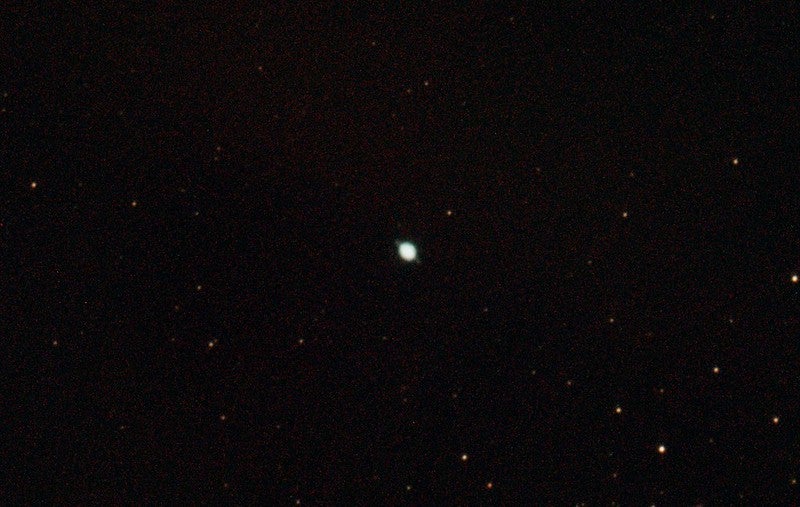
Wednesday, August 7
The constellation Aquarius lies just east of Capricornus in the sky. Early this morning, both constellations are visible in the south. The Water-bearer currently hosts Saturn, glowing at magnitude 0.7. The ringed planet will soon begin brightening even more, as it’s approaching opposition next month.
Saturn is in eastern Aquarius, about 1.3° east-southeast of 4th-magnitude Phi (ϕ) Aquarii. Through a telescope, the planet shows off its 19″-wide disk, with rings stretching roughly 43″ from end to end. Its largest and brightest moon, 8th-magnitude Titan, lies about 2.3′ west of the planet, with 10th-magnitude Dione halfway between them. To Saturn’s east, 10th-magnitude Tethys and Rhea cluster close together; potentially visible to those with large scopes are also Hyperion (14th magnitude near Tethys and Rhea) and Mimas (13th magnitude, near the eastern edge of the rings).
Asteroid 7 Iris, which reached opposition yesterday, lies over in western Aquarius, near its border with Capricornus and Aquila. The 8th-magnitude asteroid can be observed in binoculars or any telescope; it is located just 1.3′ northeast of magnitude 4.7 Mu (μ) Aquarii today.
And speaking of Saturn, roughly 3° southeast of Iris’ position is the Saturn Nebula (NGC 7009), a famous planetary nebula also well within reach of medium-sized amateur optics, at magnitude 8. Stretching about 25′ on its longer end, this oval-shaped nebula gets its name from the way its blown-off gases give it the rough outline of the planet Saturn. Like all planetary nebulae, NGC 7009 has a hot white dwarf star at the center; this one glows at magnitude 11.5. See if you can locate it.
Sunrise: 6:05 A.M.
Sunset: 8:06 P.M.
Moonrise: 9:04 A.M.
Moonset: 9:48 P.M.
Moon Phase: Waxing crescent (10%)
Thursday, August 8
The Moon reaches apogee, the farthest point from Earth in its orbit, at 9:31 P.M. EDT. At that time, our satellite will sit 251,840 miles (405,297 km) away.
A few hours before midnight, the Great Square of Pegasus is rising in the east. This large asterism — shaped like a square, as its name implies — is bounded by four stars. Starting at the top and moving clockwise, they are magnitude 2.4 Scheat, magnitude 2.5 Markab, magnitude 2.8 Algenib, and magnitude 2.1 Alpheratz. That last star is technically within the boundaries of Andromeda the Princess, serving as its alpha star.
Right near Alpheratz, some 1.5° to the star’s south-southwest and barely within the border of the Great Square, is the very first entry in the New General Catalogue of Nebulae and Clusters of Stars: NGC 1. This challenging spiral galaxy is roughly magnitude 13 and spans 2′. It lies less than 2′ due north of NGC 2, an even fainter (magnitude 15) galaxy about 1.5′ across. Although the two appear as neighbors on the sky, they are not physically close in space — they are separated by more than 100 million light-years, with NGC 2 much farther from Earth than NGC 1. Nonetheless, amateurs with large scopes can capture both together, and they make a great start for anyone ready to make the jump from the Messier catalog to the NGC.
Sunrise: 6:05 A.M.
Sunset: 8:05 P.M.
Moonrise: 10:03 A.M.
Moonset: 10:07 P.M.
Moon Phase: Waxing crescent (16%)
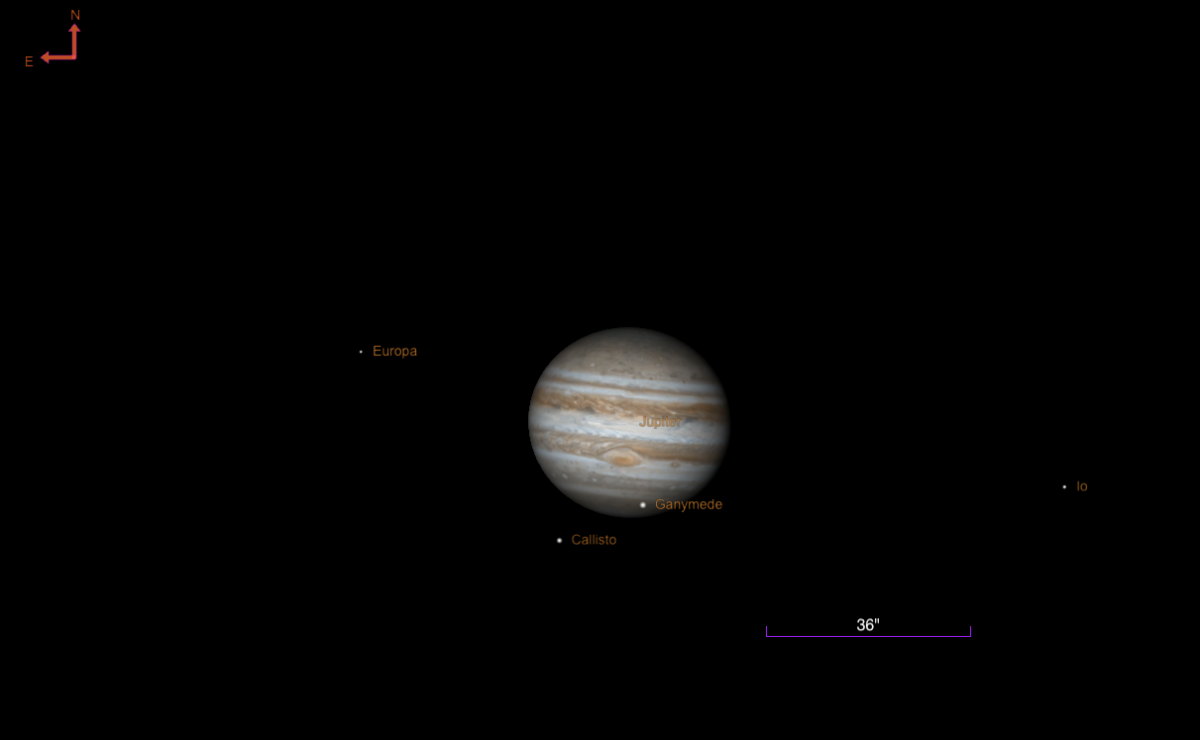
Friday, August 9
Let’s return to Taurus in the early-morning sky, but this time focus on the Bull’s other bright resident planet: Jupiter. Located roughly 7.5° northeast of Aldebaran, Jupiter is now also just over 2.5° east of Mars. The Red Planet appears to be moving quickly, closing in for a conjunction with Jupiter in less than a week.
This morning, Jupiter’s largest moon, Ganymede, transits the planet’s southern pole, moving from east to west. The event begins at 3:38 A.M. EDT — note that the planet hasn’t yet risen for the western U.S. Ganymede takes roughly two hours to cross in front of Jupiter, sliding away from the disk at 5:36 A.M. EDT.
At the same time, Callisto is starting to slide completely beneath the planet, also moving from east to west. This moon misses the pole entirely, with some 5″ of clearance mid-journey. Although Jupiter’s Galilean moons orbit in a relatively flat plane around the planet’s equator, the tilt of the gas giant relative to Earth causes the moons to appear staggered, rather than laid out in a flat plane. Europa and Io, which both orbit closer to Jupiter than Callisto and Ganymede, appear much more in line with the gas giant’s middle. Europa sits to the east of Jupiter this morning, and Io to the west.
Sunrise: 6:06 A.M.
Sunset: 8:04 P.M.
Moonrise: 11:02 A.M.
Moonset: 10:26 P.M.
Moon Phase: Waxing crescent (23%)

Sky This Week is brought to you in part by Celestron.


